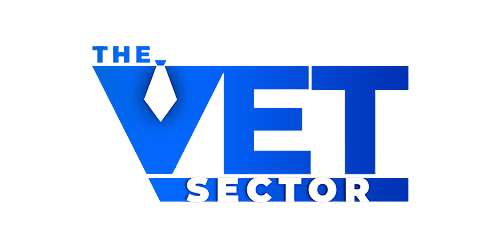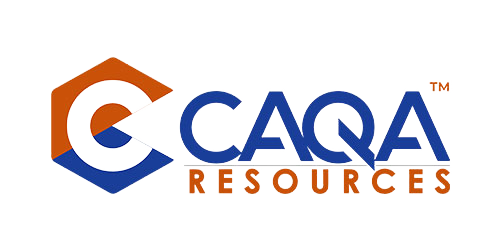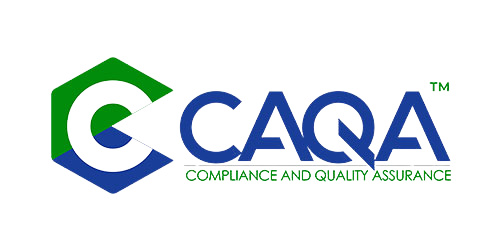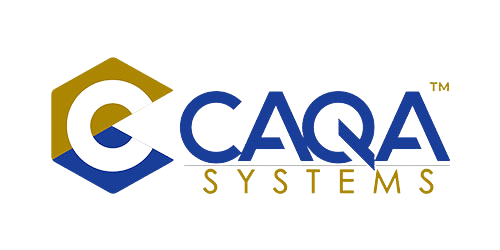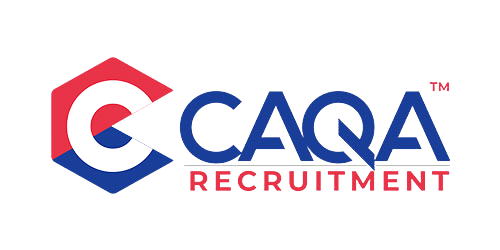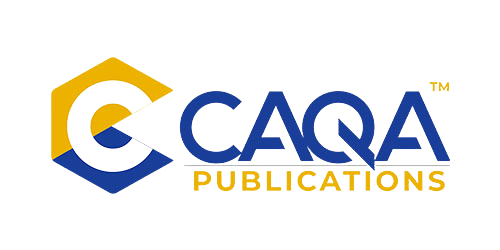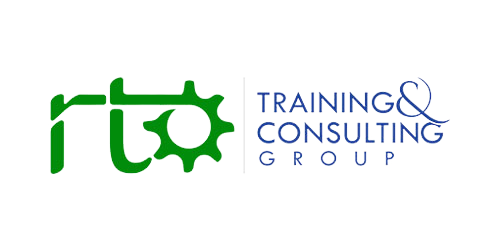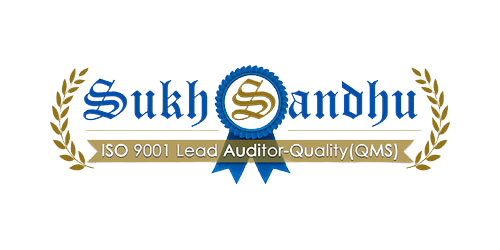Australia’s 2025 outcome-based Standards for Registered Training Organisations have changed the centre of gravity in vocational education and training. The question is no longer whether an RTO can prove it owns the right policies, forms and checklists. The question is whether an RTO can show that learners were genuinely engaged in structured learning, were supported to progress and complete, were assessed validly and consistently, and were competent in ways industry recognises. The regulator’s lens now focuses on results that can be evidenced, not simply artefacts that can be filed. This shift is healthy because it aligns the system with the purpose of VET. The country needs people who can do the job safely and well. It needs employers who can trust credentials. It needs learners who feel supported and who see that what they learn actually matters in the workplace. A standards framework that prizes outcomes over inputs honours those goals. It also creates new expectations for leadership and culture that many RTOs have discussed for years, but not always embedded. Quality can no longer be the private domain of a compliance team. It has to be a whole-of-organisation habit, led from the top, visible in routines, and experienced by learners and employers every week of the year.
The legislation itself points to what this culture requires. Quality Area 1 codifies training that is engaging and well structured, and assessment that is valid, current and fit for purpose, all underpinned by authentic industry engagement that influences design decisions in real time. Quality Area 3 sets out expectations for the workforce, including the credentials required to deliver and assess, the currency of industry skills, and structured professional development that is planned and recorded. The Credential Policy threads through these obligations and clarifies who can deliver, assess, direct others and validate, and on what terms. Quality Area 4 names governing persons, including executive officers and high managerial agents, as the people responsible for leading a culture of integrity, ensuring role clarity across staff and third parties, managing risk with discipline, and operating a continuous improvement system that is genuine rather than ornamental. In other words, the Standards already sketch the DNA of a quality culture. The work for each RTO is to make that DNA visible in decisions and artefacts so that auditors encounter a living system rather than a paper façade.
Quality culture in a modern RTO is best understood as a set of shared habits that reliably produce the right outcomes for learners, employers and regulators. These habits are visible in leadership posture. Integrity is not a poster on a wall. It is leaders narrating decisions in terms of learner outcomes and community safety. Accountability is not a slogan. It is executives showing up to reviews of assessment validation calendars, workforce credential status and risk registers, and asking questions that connect evidence to action. Openness to scrutiny is not a promise to comply if audited. It is a standing invitation for colleagues and external partners to test the strength of the system with real artefacts. A preference for evidence over opinion is not a call for more paperwork. It is a commitment to contemporaneous, attributable and triangulated records that let the organisation trust its own story of quality.
These habits are equally visible in unambiguous role clarity. Everyone in the organisation must understand who is authorised to deliver, who is authorised to assess, who may work under direction, and who may validate. Third-party providers must feel that same clarity. A trainer who can explain the boundaries of their authority can also explain how those boundaries protect the integrity of results for learners and employers. A coordinator who can show the current supervision arrangements for staff working under direction can also show that learners are not being assessed by people who lack the credentials to do so. A validation leader who can point to a rolling, risk-based plan with named validators who meet the credential requirements is already halfway to demonstrating consistent assessment outcomes across cohorts and sites.
Risk literacy across teams is another signal that the culture is real. High-quality RTOs do not hide risk registers in a compliance folder. They insert risk prompts into the conversations where decisions are made. Program review meetings include time to test whether assessment loads are realistic, whether online cohorts have the same opportunity for observed practice as face-to-face students, whether placements are sufficient in number and quality, and whether equipment is current for the version of the unit being delivered. Senior meetings include time to test student wellbeing risks, especially in under-18 and online contexts, and to confirm that conflicts of interest have been declared and managed for assessors who also supervise trainees in the workplace. Finance meetings do not ignore educational risks. They recognise that underinvestment in supervision and assessment quality will eventually convert to regulatory risk and reputational harm.
Continuous improvement must move from a promise to a practice. Under an outcome-based regime, improvement is not declared because a meeting note says an action is in progress. Improvement is declared when an artefact changes and when the effect of that change is checked. A revised TAS page that shows where practice and feedback time have been carved out in a unit is an artefact. An updated assessment instrument that fixes a validity gap detected in a moderation session is an artefact. An amended placement guide that raises minimum exposure hours for a complex skill and adds a supervisor briefing pack is an artefact. A role card that clarifies who may validate what, and why, is an artefact. Real improvement produces these objects and then returns to test whether the change achieved the intended outcome. That check might be a review of learner progression data, a sample of supervisor satisfaction reports at three months post placement, or a moderation finding that inter-assessor reliability has risen.
Program design discipline is where culture comes to life for learners. Every training and assessment strategy and unit plan should make it obvious that training is engaging and well structured. Clear pacing is visible when time is set aside for instruction, for practice, for feedback and for assessment. Engagement is visible when the design invites learners to apply concepts in authentic tasks rather than simply reading about them. A short design for learning the preface in each TAS can make the logic visible to trainers and auditors. It can explain which weekly features ensure engagement, where feedback is scheduled, how the delivery mode aligns with cohort needs, how accessibility has been considered, and how industry advice has been incorporated. This is not decorative language. It helps trainers teach with intention and gives reviewers a clear window into why the design looks the way it does.
Industry engagement has to move from ad hoc relationships to a structured program. Advisory groups for families of products can meet on a cadence that makes sense for the market. Standing agendas keep the conversation anchored to the right issues, including emerging technology, regulatory shifts, equipment standards, supervision realities in the workplace, and the evidence required to demonstrate competence safely. Inputs from these forums must be recorded in a way that connects to changes in content and assessment. The easiest path is to maintain a change log that maps the advisory input to the page or instrument that changed. When the regulator looks for industry fingerprints, the RTO can show them in the material, not just in minutes.
Workforce capability is where quality culture either flourishes or fails. Policies do not teach. People teach. A workforce matrix that shows, for every trainer and assessor, whether they can deliver and assess independently or must work under direction, the name of the person who provides that direction, the currency of industry competence, and the plan for professional development turns policy into line of sight control. When a manager can filter that matrix for any unit and immediately see who is currently authorised to assess, who is building capability under supervision, which currency artefacts support those permissions, and which CPD commitments are due this quarter, the organisation owns a living system rather than a static register that is reconstructed before audit. Embedding this transparency in induction and linking it to performance reviews reinforces the idea that capability is not episodic. It is a requirement of the role.
Validation deserves the same discipline. A risk-based plan that cycles high-risk units more frequently, that gives priority to early offerings of new or revised products, and that involves validators who meet the credential policy is a strong foundation. The plan is only as good as the follow-through. Recommendations must be tracked to implementation, and the next cycle must check whether the fix worked. Teams that treat validation as a professional conversation about evidence will improve together. Teams that treat validation as a formality to be rushed or delegated will keep finding the same issues in different clothes.
Governance is where the 2025 Standards have their sharpest cultural edge. The governing persons named by the law are not figureheads. They are accountable for leading a culture of integrity, for ensuring role clarity, for managing risk and for operating a continuous improvement system that can be evidenced. This requires managerial craft. Leaders must set a governance rhythm that ties the requirements of the Standards to the way the organisation runs. A monthly forum chaired by the chief executive or a high managerial agent can sequence the work. It can review risk registers, third-party oversight, workforce credentials and CPD completion, and the status of improvement actions arising from monitoring data. A quarterly evidence review can test each outcome area against the indicators and ask for artefacts. Six-monthly checks of fit and proper person status and a refresh of role statements and third-party obligations keep leadership accountabilities current. Predictable leadership attention sends a clear signal that the organisation runs on evidence, not on hope.
The credential policy is often where good intentions collide with audit findings. The rules are not designed to slow providers. They exist to protect learners and employers from credential drift. Capable high managerial agents design clean delegation models that protect assessment integrity and give new staff a transparent pathway to independence. Under direction arrangements should be precise about who directs whom, about the limits of what the directed person may do, about the observation and sign-off points, and about how records will show that direction occurred. Third-party arrangements should mirror this clarity. Contracts should translate standards obligations into practical duties, and monitoring should test whether those duties are being met with evidence. In an outcome-based regime, it is not enough to have a signed agreement. The provider needs to know that learners taught by third parties are experiencing the same quality of engagement, support and assessment as learners taught directly.
Translating legislation into practice begins with the governance rhythm but succeeds only when it reaches classrooms, workshops and worksites. Trainers should be able to point to practice and feedback logs that mirror the pacing commitments in the TAS. Assessors should be able to explain why the evidence they collect is valid and sufficient for the unit in question. Coordinators should be able to show that learners who need support are identified early and that the support offered matches the barrier, whether it is language, literacy and numeracy, digital access, wellbeing or placement logistics. Learners should recognise the industry relevance in what they are asked to do and should be able to see the link between classroom activities and the tasks they perform on placement or in the workplace.
Risk management must be woven into delivery rather than siloed in a register. A three-tier approach helps. The first tier is student safety and well-being, with special attention to younger students and to online cohorts. The second tier is educational risk, including the validity of assessment instruments, the realism of assessment loads, the sufficiency of placement hours and the currency of equipment. The third tier is business risk, including financial viability, conflicts of interest and third-party performance. Program reviews and validation meetings should include prompts from each tier so that decisions about timetables, staffing and resources are made with risk in view. Mitigation actions must be assigned to named owners with due dates, and progress must be reviewed until the action is closed. This simple discipline moves risk from paper to habit.
Continuous improvement is cyclic when it is supported by a small number of meaningful metrics that sit on a dashboard that executives actually review. For training design and pacing, it is sensible to track attendance in practical blocks, on-time feedback rates, observed practice hours against plan, and student-reported confidence in performing tasks. For support, it is sensible to track response times and resolution rates and to capture satisfaction with wellbeing and learning support. For industry engagement, it is sensible to track how many advisory inputs convert into changes in assessment or resources each quarter. For the workforce, it is sensible to track the proportion of staff who meet credential requirements, the rate of CPD completion, the proportion who can produce currency evidence from the last 24 months, and the count of under direction arrangements that are active with named supervisors. For governance, it is sensible to track on time risk reviews, the closure rate of improvement actions, audit outcomes and third-party attestations. These are not vanity numbers. They are the signals that tell leaders whether the system is working and where attention should go next.
Evidence is the currency of an outcome-framed regulator. To be persuasive, evidence must be contemporaneous, attributable and triangulated. Contemporaneous means that notes, logs and change records are captured at the time of the decision, not reconstructed before audit. Attributable means it is clear who decided and who actioned. Triangulated means that data, stakeholder feedback and artefacts align. If learners report that they are not receiving feedback promptly, and logs show long lags, and TAS pages make no specific allowance for feedback time, then the organisation has a clear picture of a gap that demands action. If employers report that graduates struggle with a particular task, and moderation shows variable assessor judgements on that task, and the assessment instrument relies on written responses rather than performance evidence, then the picture is equally clear. Designing evidence into everyday processes keeps an RTO audit-ready because audit readiness becomes a by-product of operating well.
Strong leadership prevents the most common failure modes. Paper-only improvement fades when every action must produce a revised artefact and a follow-up impact check. Credential ambiguity disappears when under direction boundaries are enforced, direction providers are named and qualified, and records show who directed whom and when. Industry engagement ceases to be a box tick when managers ask to see the change log that maps each input to an amendment in content or assessment. Risk registers stop gathering dust when validity, workload and placement sufficiency risks are added and reviewed alongside student safety and financials. Validation stops being perfunctory when the plan is rolling and risk-based, the validators meet credential rules and recommendations are tracked to implementation.
The outcome-based Standards also change how RTOs should think about data and technology. The right dashboards are simple and answer questions leaders actually ask. What proportion of feedback across the organisation meets the time promise made to learners? How many students are off pace in weeks three and seven of a term, and what support has been offered? Which units show the largest spread in assessor judgement, and what does moderation say about the causes? Which trainers have currency evidence that is older than two years, and what activities are planned to address the gap? Data that answers these questions helps leaders intervene early and effectively. At the same time, the collection and use of data must respect privacy and lawfulness. Students should understand what is collected and why, and staff should trust that data is used to support improvement rather than to punish without context.
Artificial intelligence is now part of learning design and assessment in many sectors. Outcome-based regulation does not forbid innovation. It asks for clarity about how the innovation protects validity and fairness. If an RTO uses AI to personalise practice tasks, the design should explain how trainers check that learners still do their own work and how evidence remains attributable. If an RTO uses AI to triage support requests, the design should explain how human oversight is maintained and how the system avoids bias. If an RTO uses AI to assist with assessment marking, the policy should explain how assessors verify accuracy and how any automated decision is reviewed before certification. These explanations are part of the story of quality and should be written into TAS documents, assessment strategies and governance minutes.
Third-party delivery remains a valuable way to reach industry and community, especially in regional areas and in specialist industries. The outcome-based Standards do not make third-party work harder by design. They make it more honest. Contracts that simply replicate legislative phrases without translating them into duties will not protect anyone. Effective arrangements spell out who does what, how often, to what standard and with what evidence, including how under direction arrangements work inside the third party’s staffing, how moderation is shared, how complaints and incidents flow, and how placement quality is checked. Monitoring is not a site visit once a year. It is a pattern of engagement that looks at artefacts, checks data and follows up on actions. When a third party can describe these routines without prompting, the RTO has earned confidence that the standards are alive outside its own walls.
Learner voice is central to an outcome frame. It is not enough to circulate a survey and hope for comments. RTOs should design multiple feedback channels that are purposeful and safe. Learners should be able to report whether they are receiving feedback on time, whether assessment loads feel manageable, whether they experience a connection between classroom content and workplace tasks, and whether support is accessible. Staff should be able to report assessment validity concerns without fear, and those concerns should be investigated by people who understand the units in question. Employers should be able to comment on the job readiness of graduates and should see that their input leads to evidence-based changes. Regulators should feel that the RTO is willing to test its own claims in public. When teams see feedback leading to changes, they engage more, and the loop strengthens.
High managerial capability is the decisive variable because culture cascades. Staff copy what leaders consistently reward and what they personally review. If executives demand timely CPD, coherent validation plans and documented industry consultation, and if they show up to these reviews, teams learn that quality is non-negotiable. The governance suite in the Standards expects leaders to tie role clarity, risk management and improvement loops into a single operating rhythm. This requires leaders to eliminate duplication, to align dashboards and meetings to the outcome statements, and to turn indicators into questions that matter. The most effective leaders narrate decisions in simple language. They say which outcome is being improved, which risk is being addressed, which evidence supports the decision and when the impact will be checked. That narration does more to embed culture than any policy update.
Because the Standards are outcome-based, the right performance indicators reinforce the right behaviours. It is sensible to avoid overloading teams with dozens of measures. A concise set that aligns with the main outcome areas is enough. The key is to keep the measures visible and to make them part of the meetings where decisions are made. Over time, these measures will help leaders answer the question that an outcome regulator always asks. What do your systems actually achieve for learners and for employers? If the answer is grounded in data and artefacts and if the organisation can point to recent changes that improved results, the RTO will be trusted to keep improving.
All of this can sound demanding when written on a page. It feels different when experienced inside an organisation that has done the work. The culture test is simple and daily. Managers ask which outcome a decision is improving and point to the relevant clause. Trainers keep practice and feedback logs without being told because they understand that pacing supports progression. CPD calendars and currency artefacts are live and visible, not reconstructed before audit. Third-party tutors or industry experts can explain under direction boundaries and name their direction providers. The continuous improvement board moves items every week, and staff can name a change that improved a learner outcome in the last month. Organisations that can say yes to these behaviours do not need to gear up for audits. They are audit-ready by operating well.
The 2025 Standards were designed to support continuous and ongoing improvement across the sector by specifying outcomes and performance indicators so the regulator can judge results rather than checklists. That vision becomes real only when governing persons turn the standards into rhythms, talent decisions and everyday routines. A quality culture in an RTO is visible in the way leaders run meetings, in the way trainers plan time for practice and feedback, in the way industry advice becomes changed content, in the way CPD and credentials are planned and reviewed, and in the way data moves people to act. If senior leaders orchestrate those elements with clarity and discipline, an RTO will comply with the letter of the law, and it will earn trust from students, employers and auditors. It will also improve quarter after quarter by design.
What does this look like one year into the new framework? The best organisations have simplified their documentation by pushing detail into artefacts that staff use every day. TAS documents are shorter because they point to live timetables, feedback schedules and placement guides that are maintained in operational systems rather than replicated in static PDFs. Validation reports are concise because the underlying assessment design notes and moderation discussions are available. Workforce matrices are up to date because managers review them monthly and link them to rostering. Third-party monitoring reports are shorter because they draw on the same dashboards the RTO uses internally. These organisations have learned that the secret to satisfying an outcome regulator is not more paperwork. It is better placed evidence and better routines.
The practical path for RTOs that are still adjusting is straightforward. Start by setting the governance rhythm and by naming owners for each outcome area. Build a single workforce matrix that answers in one view who can do what today and why. Add a short design for learning insert to every TAS so the case for engagement and pacing is visible. Stand up a quarterly advisory forum for each product family and keep a change log that maps inputs to resources and tools. Tighten the risk register by bringing educational risks into program reviews and validation sessions. Trim dashboards to a handful of metrics that leaders will actually read. Require that every improvement action ends with a changed artefact and a scheduled impact check. Then keep going until these routines feel normal.
Australia’s outcome-based Standards have lifted the bar on what good looks like in vocational education and training. The bar is not a fashionable language about innovation. It is the practical, defensible claim that learners were engaged, supported and assessed well, that they are competent to the standard the industry expects, and that the organisation can show how it knows these things are true. When quality becomes culture rather than compliance, learners benefit first. Employers benefit because they can trust the signal. The public benefits because the system does what it says on the label. The sector benefits because confidence grows when results are visible and when improvement is routine. That is the promise of the 2025 Standards. It is a promise the sector can keep if leaders are willing to make quality a daily practice that is simple to observe and hard to fake.








